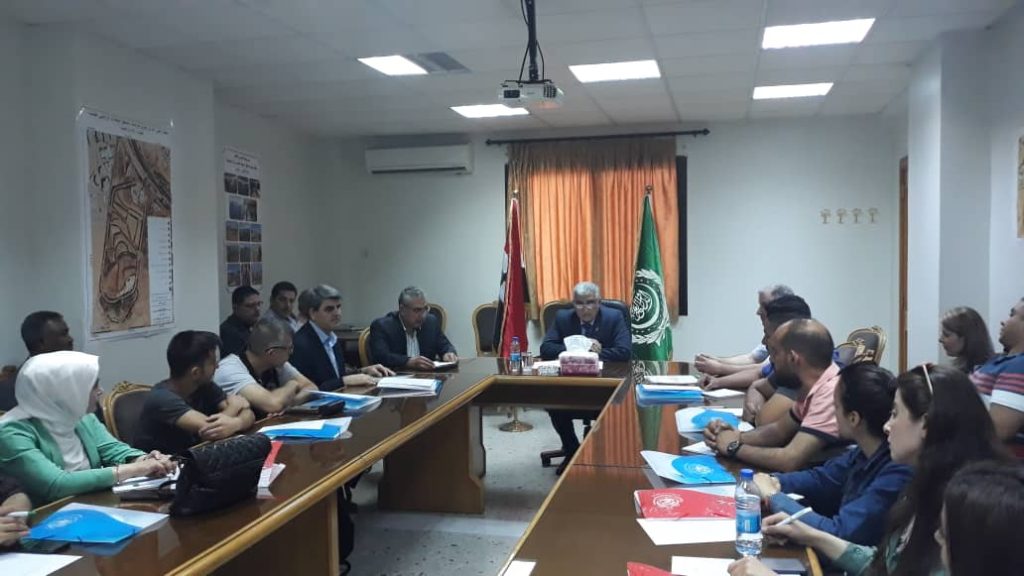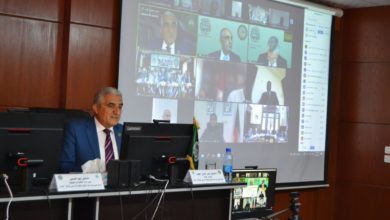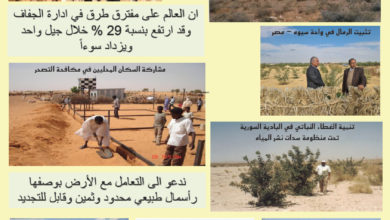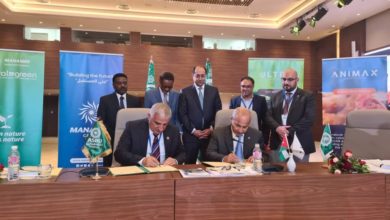ACSAD Organization/training course on Breeding value estimation of the farm animals by using the bundle of the VCE statistical program

A training course on the breeding value estimation of the farm animals by using the bundle of the VCE statistical program has been launched today at the Arab Centre’s headquarters for the Studies of Arid Zones and Drylands ACSAD, within the executive programs of the cooperation convention between ACSAD and the Ministry of Agriculture and Agrarian Reform in the Syrian Arb Republic, to promote the technical staffs’ abilities in genetic improvement of livestock.
The ACSAD’s Director-General, H.E Dr Naser Edin Obeid, confirmed in a speech that the agricultural sector (plant and animal) is facing many challenges and difficulties in the current situation, such as the adverse impacts of climate change, which has become a living reality, in addition to the natural disasters like drought, fires, Corona epidemic repercussions, the influence of the local and international crises directly on the supply chains of production inputs and products marketing, which will expose the food and water security to a real danger.
Dr Obeid called for exerting efforts and cooperation with all institutions, bodies, and Arab and international organizations to share experiences and provide the technical and scientific support to combine with the national efforts to raise the livestock sector to advanced levels contributing to achieving food security and self-sufficiency in the Syrian Arab Republic.
He also explained that the agricultural development in general and livestock evolution, in particular, are the core of ACSAD’s interests, which recorded outstanding success stories in these fields through its integral programs of genetic improvement, the fodder resources development, animal health and Extension, the integral management of animal resources; this would not have happened without working under the governance approach hand in hand with the real stakeholders like breeders, technicians, and decision-makers, which drastically contribute to improving the milk and red meat productivity, decreasing the hazard of diseases spread, and preserve the local breeds from extinction.
He disclosed that the ACSAD organization owns successful experiments in the genetic improvement of small ruminants since it achieved an increase in the average of Awasi’s milk production by about 294 kg per head per season and 45% for the twinning percentage; whereas for the Shami goat, the average of milk production was about 497 kg per head per season and 77% for the twinning percentage which beats the global breeds. Our organization also preserves the local breeds of livestock adapted well to the Arab region’s environmental conditions.
The ACSAD’s Director-General also said that the constructive and fruitful cooperation between ACSAD and the Ministry of Agriculture and Agrarian Reform in the Syrian Arb Republic has accomplished many crucial achievements by what the convention stipulates, and the strategies that burst out from the agricultural forum “opportunities and challenges.” This year, ACSAD has implemented five studies to improve agrarian animals in Syria in cooperating with the Ministry of Agriculture and Agrarian Reform and funding by the International Fund Agriculture Development IFAD, where these studies have characterized the reality of the cows and sheep sector and put the road maps to improve them. These studies confirmed, among other factors, the importance of existing well-qualified and trained cadre that is able to engage in the implementation tasks of the recommendations of those studies, especially in the genetic improvement of the agrarian animals that come within the completion of the training activities that had been implemented during the last two years and were about 19 training activities in livestock in the Syrian Arab Republic.
This four-day course aims, with the participation of 12 trainees of specialized technicians in the genetic improvement of livestock in the Syrian Ministry of Agriculture, to enable the trainee to acquaint the various methods of genetic evaluation of livestock by using information resources whether from the animal itself, relatives, or by matching among these resources, as well as evaluating animals relying on one economic attribute or more in a format of election guide to maximize the economic benefit of the animals by using the VCE program of statistical bundles.



